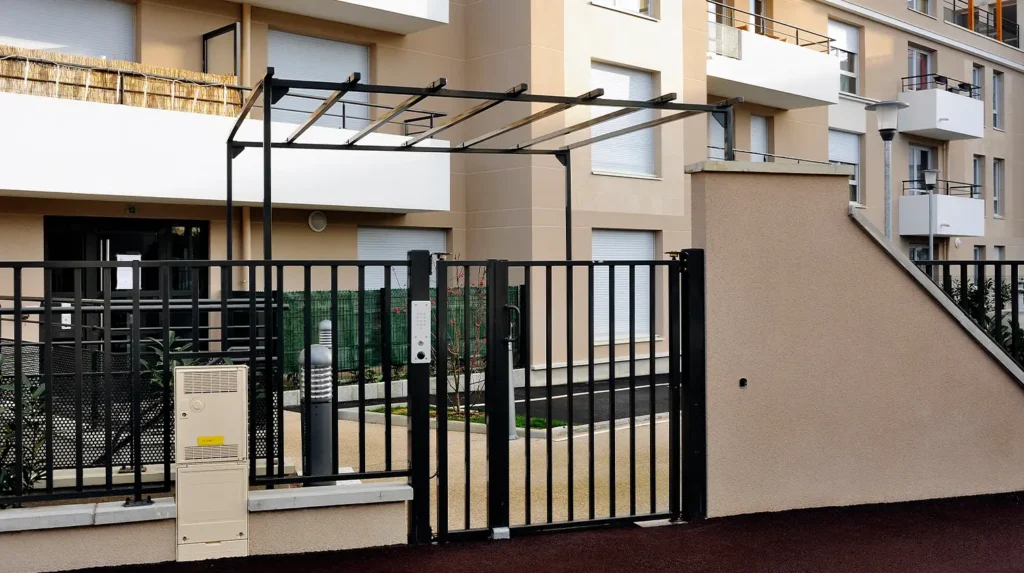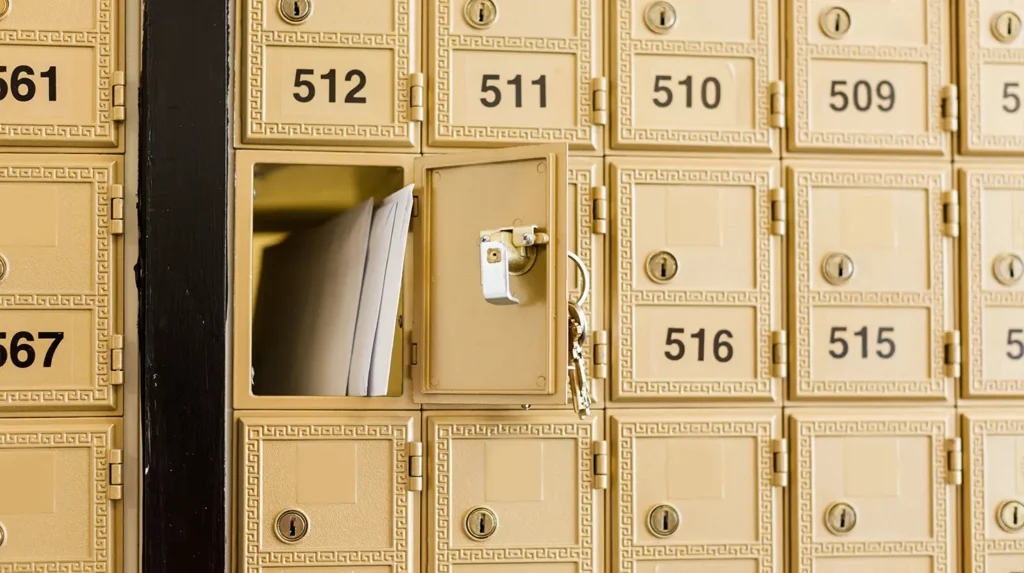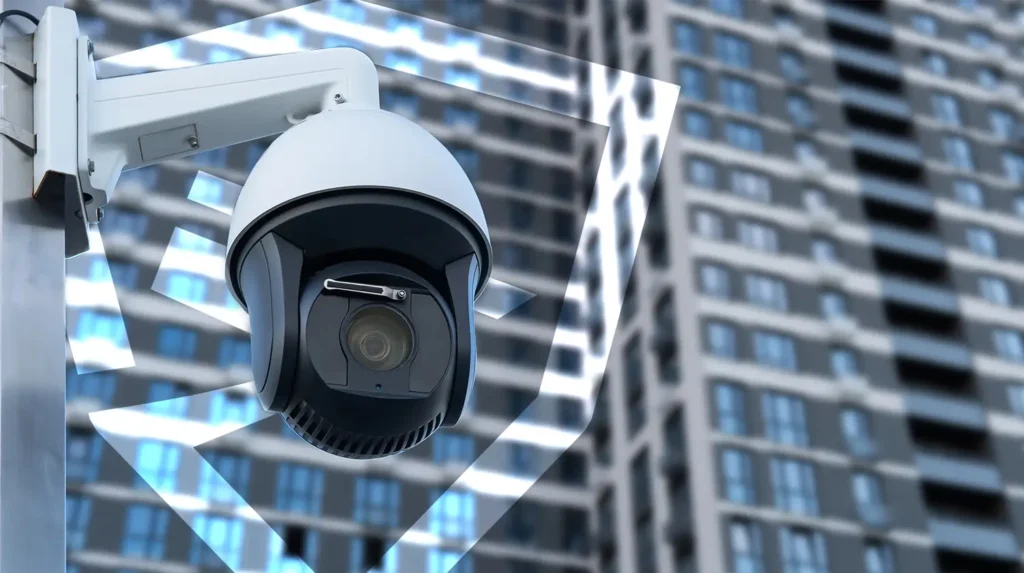Creating a safe apartment community is a big concern for property managers, owners, and residents. A recent survey by Apartments.com found renters ranked price and safety as top priorities when deciding where to live. But despite good intentions, some security mistakes can leave a property vulnerable. Here are eight things to watch for and some advice so that your apartment community stays safe and secure.
1. Ignoring Blind Spots
The Problem: When it comes to security design and planning for a safe apartment community, blind spots are often overlooked in parking lots, corridors, and stairwells. These areas can be a hiding place for attackers and make residents feel uncomfortable.
Many apartment communities focus on the obvious security measures and ignore these potential danger zones. Common blind spots include corners of parking structures, recessed doorways, dense landscaping, and areas behind dumpsters or utility structures. These areas can create direct security risks and lead to lower property value and resident satisfaction over time.
The Solution: To address these blind spots effectively and to help create a safe apartment community, try:
- Performing a comprehensive security audit to fill the gaps.
- Installing strategically placed surveillance cameras.
- Improving lighting in poorly lit areas.
- Reviewing footage regularly to ensure these measures remain effective.
- Considering architectural changes, such as installing mirrors at corners, replacing solid walls with transparent materials where possible, and redesigning landscaping to eliminate hiding spots.
- Working with security consultants to identify hotspots.
2. Inadequate Perimeter Security

The Problem: A weak perimeter invites unauthorized access and can threaten a safe apartment community. Open gaps, broken gates, or unguarded portals are typical weaknesses. Incomplete or deteriorating perimeters can make security systems less effective.
These would typically include low or highly scalable fencing, gates with outdated or malfunctioning access controls, and natural barriers that wear away over time. Unauthorized access points develop through wear and tear, or resident modifications.
The Solution: To help strengthen your perimeter and deter unwanted visitors, consider:
- Securing perimeters with high-grade fencing.
- Allowing entry into the property only through a gated area with an access-controlled system.
- Checking gates and fences regularly and making necessary repairs
- Implementing physical security measures like electronic access controls, security guards, and anti-climb features that can be added to fences and gates
- Following proper procedures and rules for visitors and delivery people.
- Walking the property to spot gaps that need to be fixed.
- Creating a maintenance schedule to test all access points and change access codes.
- Environmental design principles that could naturally block unauthorized access while keeping an attractive appearance.
3. Unsecured Mail/Package Rooms

The Problem: Exposed mail and package areas are a target for theft, especially with the rise of e-commerce shopping – a $6.8 trillion industry. Areas like these can become weak entry points and attract package thieves to a safe apartment community.
The security of standard mailbox systems and package holding areas is not always sufficient for the volume and value of today’s packages. Package theft often causes resident dissatisfaction and potential liability for property management. Unsecured mail areas can compromise resident privacy and could lead to identity theft caused by the stolen mail.
The Solution: The following measures can help protect mail and package areas from theft and boost resident satisfaction:
- Secure package lockers with individual access codes for package tracking.
- Monitor the mail room with cameras.
- Use a package management system that notifies residents when deliveries arrive and only allows access to authorized recipients.
- Install smart locker systems for packages of all sizes and 24/7 resident access.
- Have a backup system for packages that are too big for the lockers.
- Train staff on proper procedures for handling packages
- Define policies for deliveries that require a signature.
- Offer a package acceptance service during business hours with locked storage.
- Install lighting and surveillance systems specifically for the mail and package areas.
- Create an electronic log system to track all packages from receipt to pick up.
- Partner with delivery services to create delivery protocols.
4. Insufficient Lighting

The Problem: Poorly lit areas like paths, parking facilities, and building entrances can increase crime risks in a safe apartment community. Dark areas provide opportunities for criminal activity and may make residents feel unsafe when walking around the property at night. Many properties struggle to balance energy efficiency with security needs. This often results in insufficient lighting in problem areas and can cause dark zones if not well maintained.
The Solution: To reduce risks and enhance safety, it’s important to fix bad lighting and:
- Install bright energy-efficient LED lighting in all outdoor and common areas.
- Put lights on walkways, entrances, and parking areas.
- Consider motion-activated lights to conserve energy and add security.
- Create a lighting plan with routine maintenance and upgrades.
- Program smart lighting systems to change based on the time of day and usage patterns. Make sure to layer lighting so it doesn’t compromise ambiance, accents, and tasks for maximum visibility and safety.
- Install backup power for all lights used for security.
- Create lighting zones that can be controlled based on needs and usage patterns.
- Conduct nightly security audits to identify areas that need more lighting.
- Work with lighting designers to get uniform coverage without harsh shadows or glare.
5. Lack of Resident Awareness
The Problem: Residents who don’t know the procedures or don’t follow them could compromise community safety. This includes opening doors for convenience, sharing access codes, and not reporting suspicious activity. Many residents consider themselves minor contributors to security issues within their community or don’t understand how their actions affect others.
Cultural differences and language barriers can sometimes cause misunderstandings about security procedures. High resident turnover can hinder consistent security awareness in the community.
The Solution: To promote a safe apartment community and minimize risks, consider the following to engage and educate residents:
- Create a security-conscious culture by training residents on security procedures.
- Conduct regular meetings or send newsletters with helpful tips like “don’t prop doors open”, “be on the lookout for suspicious activities,” and “keep valuables safe.”
- Have a full resident security handbook available and make sure all new residents review it when they move in.
- Use email, text alerts, and community apps for a multi-channel awareness campaign.
- Have quarterly security awareness events and invite local law enforcement to participate.
- Create an anonymous reporting system for security concerns.
- Develop a resident security committee to promote best practices.
- Provide multilingual security materials as needed.
- Use real examples to illustrate how important these procedures are.
- Reward residents who follow and advocate good security practices.
6. Ignoring Regular Maintenance
The Problem: Faulty or outdated security systems, compromised locks, and damaged equipment make facilities vulnerable. When maintenance is delayed, it could cause security failures and create opportunities for breaches.
Many properties balance maintenance costs with other operational needs and create their own security vulnerability. Outdated systems may not be able to integrate with new technology, which can create gaps in coverage. Without regular testing, security failures may only be discovered after an incident occurs.
The Solution: To help prevent vulnerabilities caused by maintenance issues, try:
- Scheduling routine maintenance tests on all security equipment including cameras, access control systems, and alarms.
- Fixing issues immediately to ensure systems are working correctly.
- Creating a comprehensive preventive maintenance program including regular testing of all security systems.
- Building relationships with security system vendors for quick response to critical issues.
- Training maintenance personnel in basic security system troubleshooting.
- Having a schedule for periodic security software and firmware updates.
- Creating a plan for system failures.
- Budgeting for routine maintenance and system upgrades.
- Performing security audits to determine potential maintenance issues before they become problems.
- Considering predictive maintenance technologies that can anticipate failures.
7. Allowing Aggressive Dog Breeds

The Problem: Allowing aggressive dog breeds in an apartment community can be a safety risk to residents, guests, and other pets. Many dogs are well-behaved and social, but some breeds can be more prone to aggressive behavior if not managed or trained properly. This can lead to dog bites, altercations, and liability for management and owners. Plus, some residents may feel unsafe with aggressive dogs and that can lead to lower community satisfaction and higher turnover.
The Solution: To keep all residents safe and comfortable try:
- Restricting certain breeds. Make a list of prohibited breeds based on ones created by insurance providers and local laws.
- Requiring proof of vaccinations, training certifications, and pet history for all dogs in the community.
- Setting size or weight limits for pets to reduce aggressive behavior.
- Creating a pet behavior policy. Include rules for leashes, supervision, and behavior in common areas.
- Screening pets in the application process to evaluate temperament and history.
- Giving residents information on local obedience training or behavior modification programs.
- Designating areas for pets to play and interact to reduce conflicts in common areas.
- Monitoring pet policies regularly and address any violations immediately.
8. Having Unmonitored Security Cameras

The Problem: Installing security cameras without monitoring can give a false sense of security. Unmonitored cameras can record incidents but can’t respond to emergencies or suspicious activities in real time. Many properties invest in camera systems but underestimate the importance of active monitoring. Recorded footage is often reviewed only after an incident has happened. Poorly placed cameras, lack of coverage, or low-quality equipment could reduce the system’s effectiveness. Inadequately stored or managed footage could also cause issues.
The Solution: Partner with a professional live video monitoring company that specializes in multi-family residential security. Such specialized services provide trained security professionals who can monitor camera feeds from a secure, remote monitoring center. In cases of suspicious activity, the monitoring operators can intervene immediately through audio communication, deter potential criminals, and dispatch emergency services if needed.
Use a service agreement that includes:
- Real-time monitoring of all camera feeds during high-risk hours
- Virtual guard tours
- Voice-down capability to address any suspicious individuals if needed
- Direct contact with local law enforcement
- Regular security events and response reports
- Integration with access control systems
Work with your monitoring service provider to:
- Optimize camera placement in strategic places for maximum coverage
- Define procedures for escalation based on the type of security event
- Create custom monitoring schedules for your community
- Automate video analytics to help detect potential security threats
- Perform system health checks to make sure all cameras are online and working
- Store, retrieve, and review video for incident documentation
The right live video monitoring solution not only helps deter incidents in progress, but it can often provide a quick ROI.
Avoid These Mistakes for a Safe Apartment Community
A safe apartment community is built on proactive planning, resident education, and regular maintenance. Fix these common security issues and follow these tips to create a safe living space for your residents.
For more expert advice on maintaining a safe apartment community, contact us today or explore additional resources on our blog.
Frequently Asked Questions
What are the biggest security risks in apartment communities?
Blind spots in parking lots and stairwells, weak perimeter security (broken gates or unsecured access points), poorly lit areas, and unsecured mail/package rooms. Regular security audits can help you find these weaknesses before they become problems.
How do apartment communities prevent package theft?
Secure package lockers with individual access codes, surveillance cameras in mail rooms, package management systems that notify residents of deliveries, clear protocols for oversized packages, and signature required items. Staff should be trained in package handling procedures.
What makes a good security camera system?
A good system requires both good equipment and monitoring. Cameras should be placed in strategic locations, professionally monitored in real-time during high-risk hours, have voice-down capability to address suspicious individuals, and be integrated with local law enforcement.
How do property managers get residents involved in security?
Property managers should create a security-conscious culture through resident training, regular communication about security procedures, and a clear reporting system for suspicious activity. This includes a security handbook, awareness events, and a resident security committee.
How does maintenance impact apartment community security?
Maintenance is key to security. This means routine testing of all security equipment (cameras, access controls, and alarms), immediate repair of any issues, security software updates, and scheduled system upgrades. Neglecting maintenance can create vulnerabilities and security failures.

